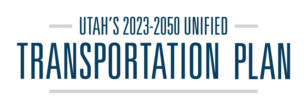Potential Policy Decisions
Transportation officials and policymakers have a number of levers to pull in order to create a vibrant transportation future. Following are a few potential policy actions that would change the system directly or serve to change behavior at an individual or community level.
Road Usage Charge
Not only are transportation options changing, so is the way we fund the system. As cars become more fuel efficient and the fleet begins to change from primarily gasoline-powered vehicles to electric, we must explore new and innovative funding mechanisms. The Road Usage Charge is one such method and is a potential replacement for the fuel tax. Instead of paying per gallon, drivers pay per mile. This per-mile fee is a fair and equitable way for drivers to pay for roadway operations and maintenance. In 2020, UDOT implemented an initial Road Usage Charge program. 53,000 vehicle owners were eligible to participate in the new program out of the 2.6 million vehicles registered in Utah. This initial program will help us better understand the technology and customer experience so that Utah’s policymakers can make an informed decision about potential program expansion in the future.
Congestion Pricing
What if, by paying a little bit, you could save a lot? Nobody likes traffic congestion. The challenge with reducing congestion by adding lanes is that it usually entices people to travel more, which in turn hastens the return of congestion. Congestion pricing is the idea of charging a modest toll on certain lanes only at congested times of day. The toll is meant to be just enough to encourage some people to commute at another time of day, carpool, or take transit so that the road stays free from congestion. While tolling has its critics, the benefit of congestion pricing is twofold:
- Those who choose to pay benefit by saving time, which is often more valuable than the out-of-pocket price.
- Those who choose not to pay have a broader set of choices that include traveling at less congested times of day or utilizing bicycling or transit facilities that can be improved due to increased use.
Congestion pricing is generally established to improve life for the traveling public, and not as a tool to generate revenue.
Fast, Frequent, and Zero-Fare Transit
Zero-fare transit means that the cost of transit is paid through revenue sources other than direct fares paid upon boarding the transit vehicle. Several partners, including Utah Transit Authority (UTA), the State of Utah, numerous cities and counties, Mountainland Association of Governments (MAG) and Wasatch Front Regional Council (WFRC), and 96 education entities and private businesses, supported Free Fare February in 2022. UTA ridership increased on all days of the week (+16% on weekdays, +58% on Saturdays, +33% on Sundays), and more than a fifth of riders were new riders. The next question that the state must address is how much of an increase in ridership is a result of zero-fare days, and what is the potential impact of that increase, like how much does it reduce air pollution.
In addition to environmental impacts, zero-fare transit expands access for many with limited income to new jobs, education, healthcare and daily errands. In Cache Valley, the Uintah Basin, Brian Head, Park City, Summit County, and Zion Canyon, zero-fare transit is a key component of supporting tourism and the local economy. Furthermore, subsidized transit and increased service levels on the UVX line in Utah County has resulted in an increase from 1,800 boardings per day to over 14,000 boardings per day. A 2022 study by UDOT, UTA, MAG, and WFRC projects that system-wide UTA ridership would increase by 24% to 36% with zero fares, at an initial annual cost of roughly $35 million (for fare revenue replacement). Beyond air quality, some congestion relief has been shown to occur with zero-fare transit.
